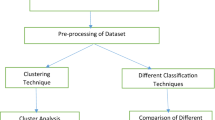Abstract
A Computer-Aided Learning (CAL) program has been developed as a support aid for students learning the principle of effective stress and its application. The program called ESP (Effective Stress Program) has evolved over a period of two years as a result of research into student learning. This paper discusses the development, use and evaluation of the latest version of the program ESP98. ESP98 is shown to be an effective support tool by outperforming the conventional methods of instruction. The key to the success of ESP98 is the high level of interaction which students experience. The nature of the interaction is centred on a mistake-induced dialogue where the student is provided with progressive and instant feedback and guided towards the final answer. ESP has been integrated into the curriculum at Heriot-Watt University for the past two years and is freely available for use by other teaching institutions by contacting the authors.
Similar content being viewed by others
References
Anon (1991) Authorware Professional Reference Manual, Version 2, Authorware Inc. USA.
Oliver A.W. (1997) A Computer Aided Learning Package for Teaching Effective Stress in Soil Mechanics, Internal report 2, Heriot-Watt University, Edinburgh.
Author information
Authors and Affiliations
Rights and permissions
About this article
Cite this article
Oliver, A., Oliphant, J. A Computer-Aided Learning Program for Teaching Effective Stress to Undergraduates. Geotechnical and Geological Engineering 17, 85–97 (1999). https://doi.org/10.1023/A:1008905107543
Issue Date:
DOI: https://doi.org/10.1023/A:1008905107543




